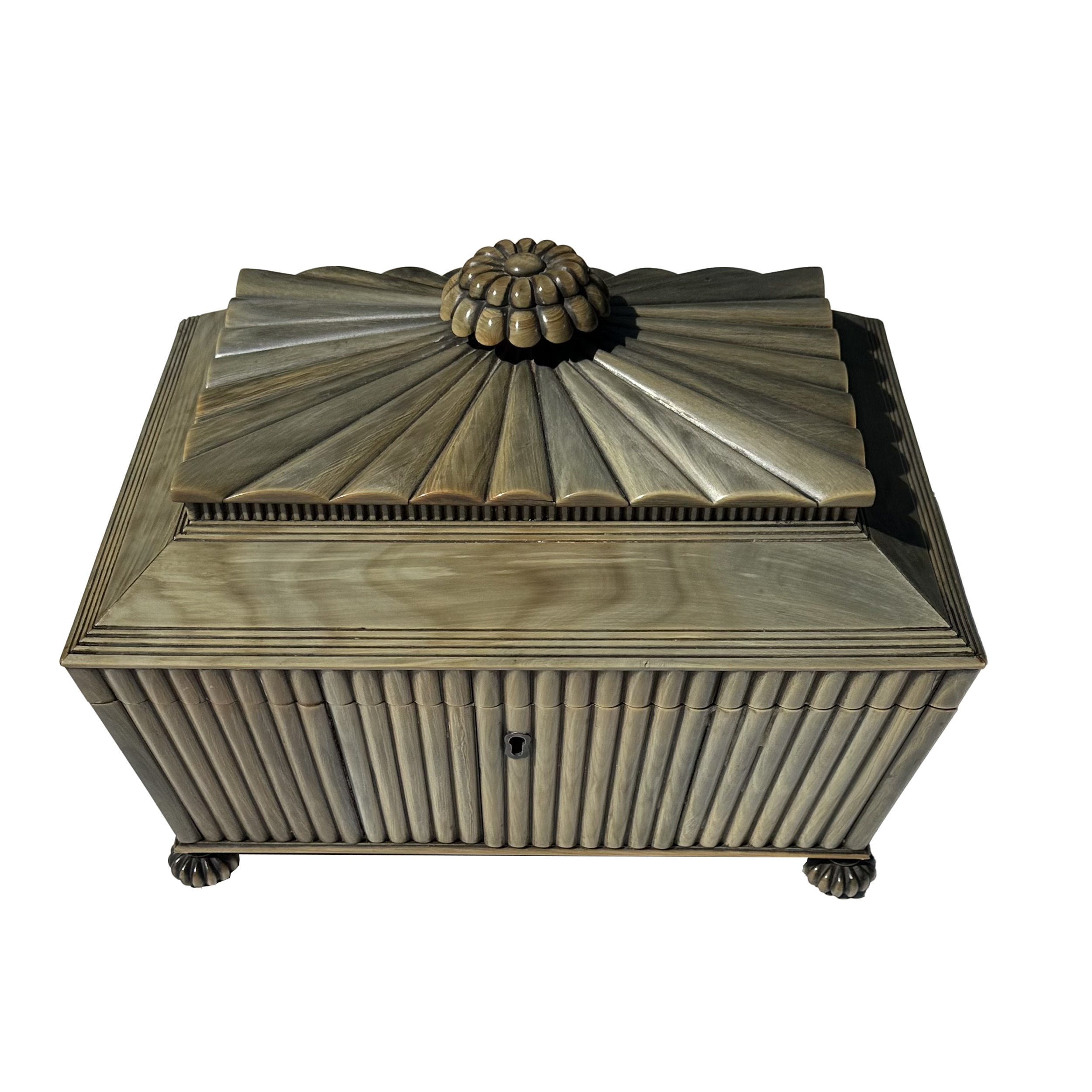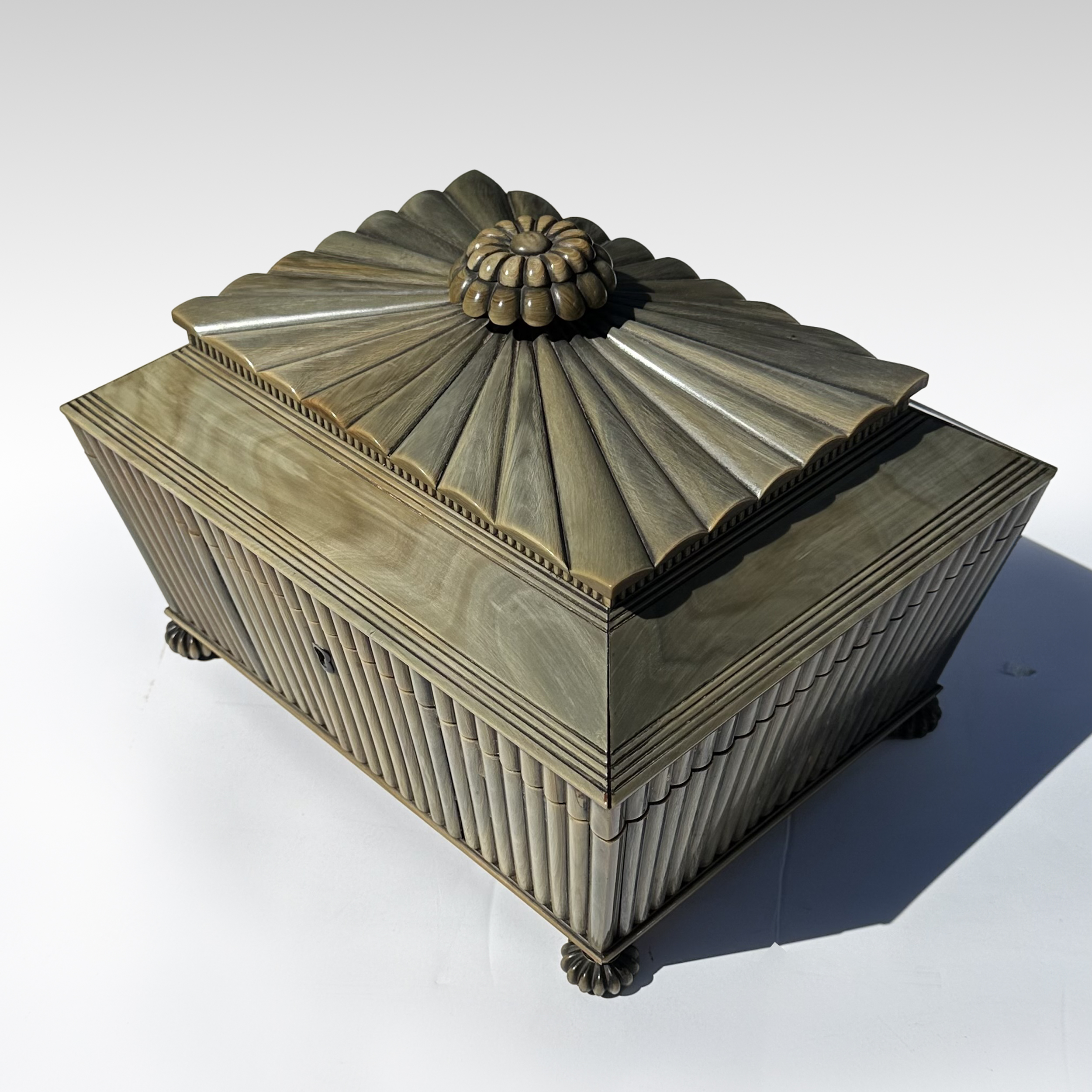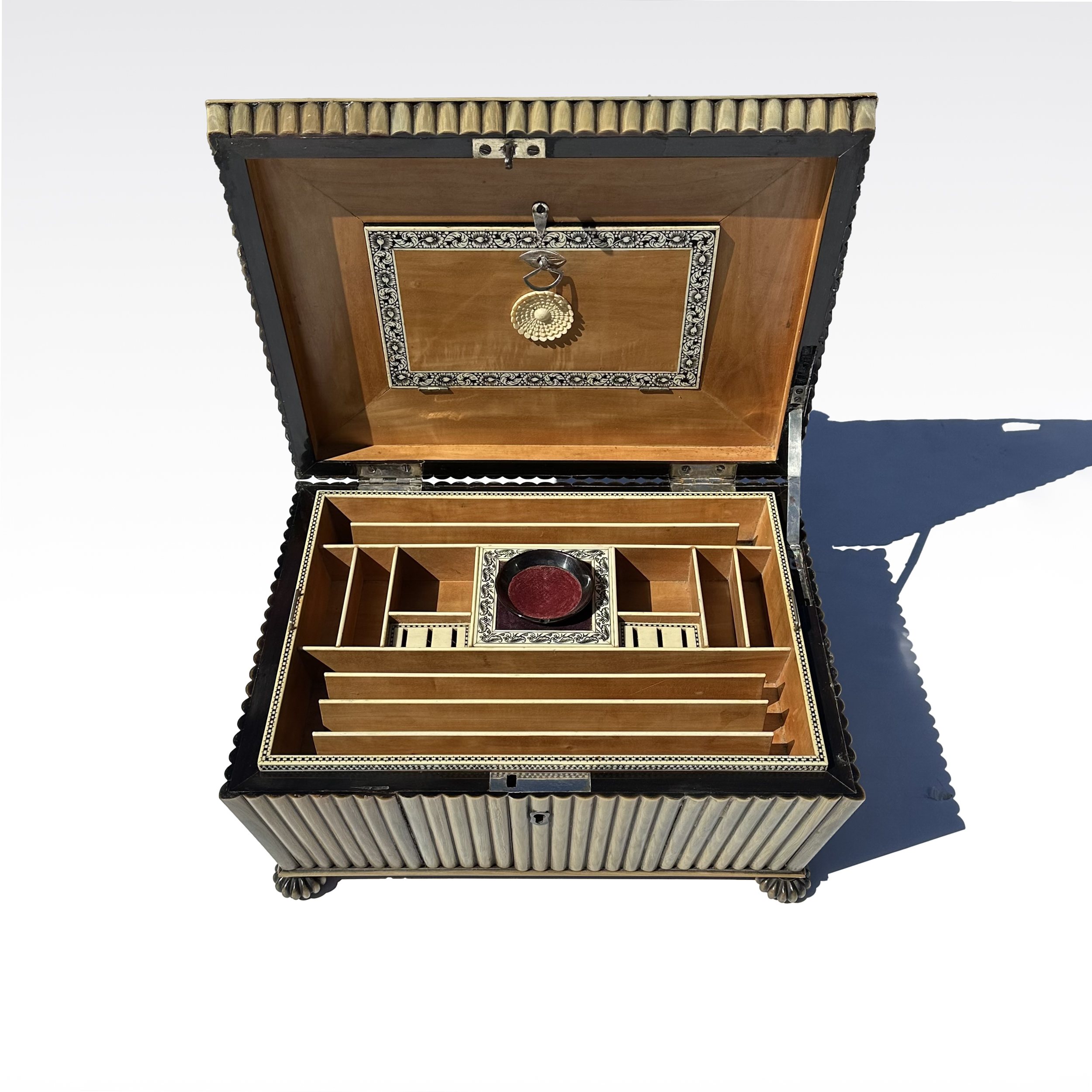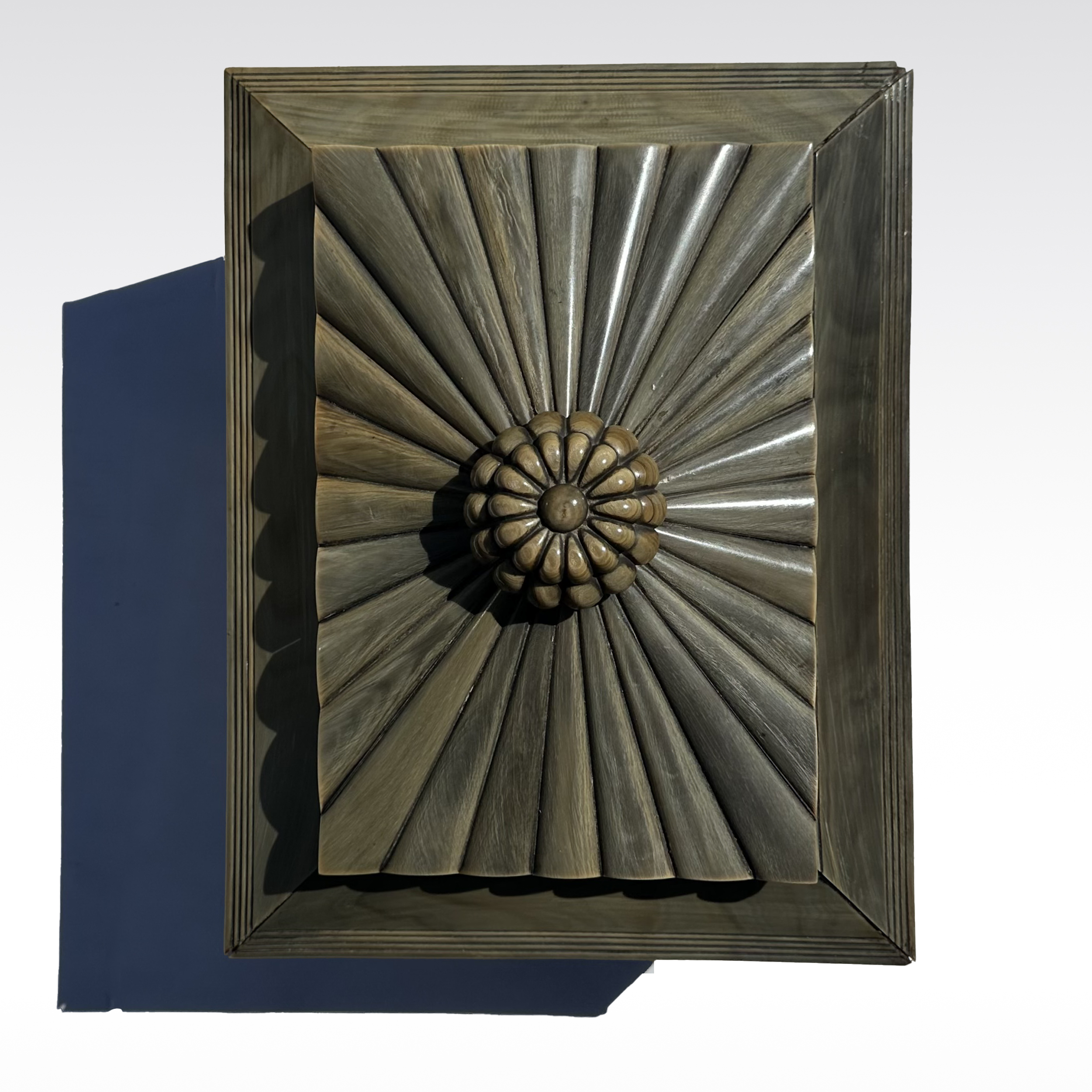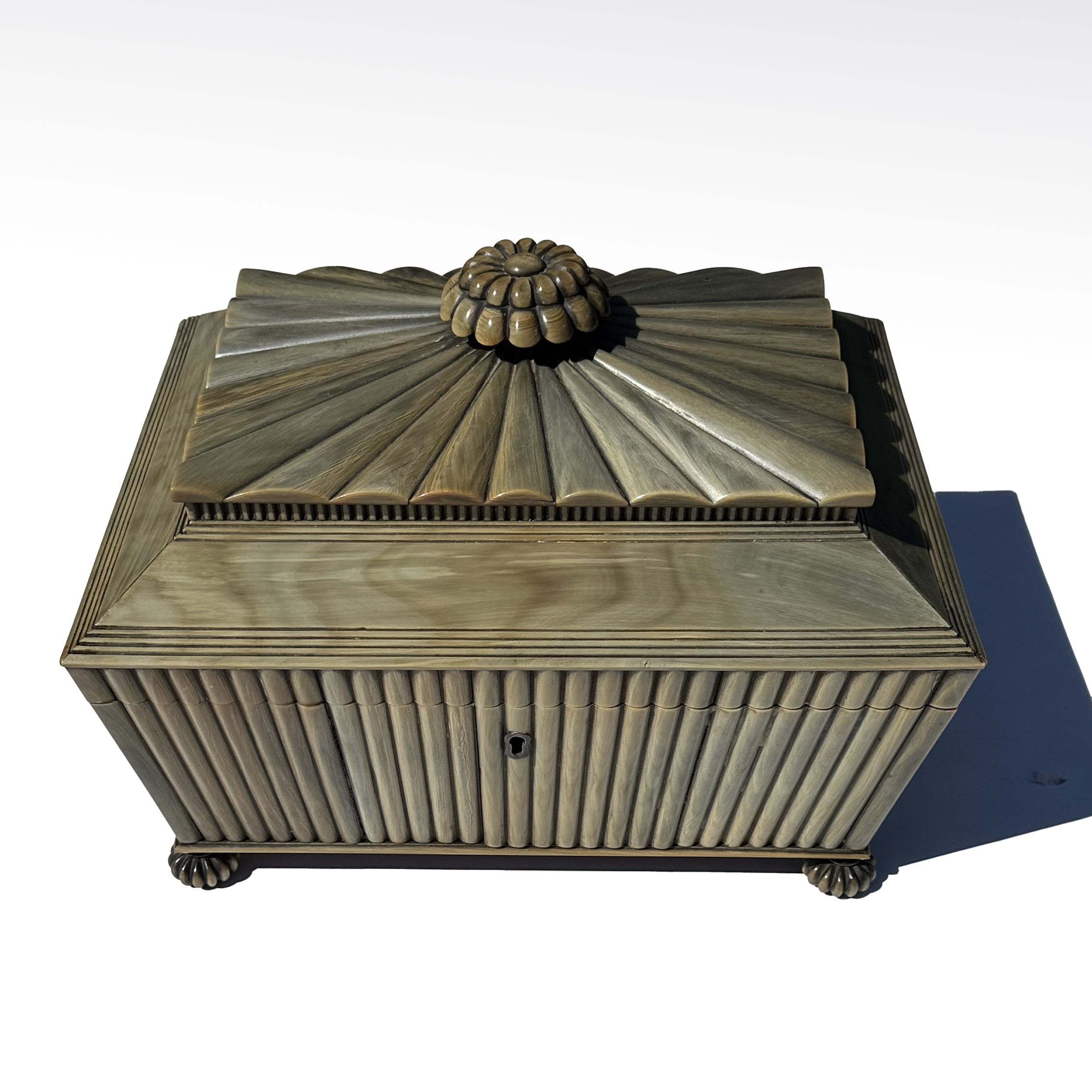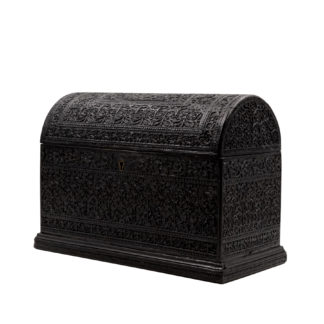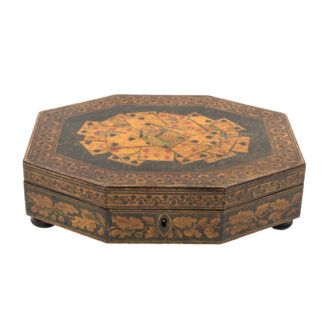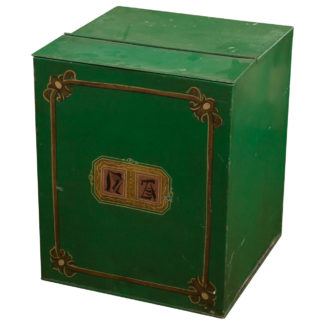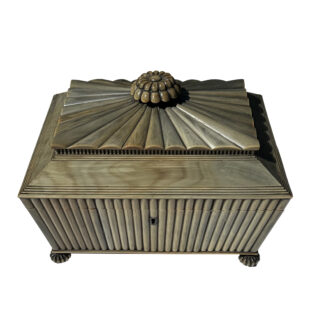Description
Regency Period Anglo Indian sage green buffalo horn men’s dressing box with pagoda shaped top and carved horn finial, fluted, carved horn on all sides of the box on pumpkin shaped carved horn feet. Fully fitted interior in satinwood with black horn edging, drop down compartment on the underside of the lid with carved bone lotus flower, working lock with key, Vizagapatam region, India; Circa 1810. 1
height: 9 in. (23 cm.)
width: 13 in. (33 cm.)
depth: 10 in. (25.5 cm.)
Further readings and sources:
- “… the first half of the nineteenth century included an improvement in the technical aspects of the execution of Vizagapatam work, evident for instance in cleaner and more regular joints and a finer finish, with greater attention paid to consistency in decoration and manufacture. The period also ushered in the use of a broader range of materials, particularly buffalo horn, elk horn and porcupine quill, .. Forms were also increasingly rationalized, with objects produced in a variety of materials from components of standardized design and decoration. The greater part of manufactures of this period consist of work-boxes – typically of sarcophagus shape and with fitted interiors for needlework – work baskets, envelope boxes and glove boxes in the same vein as micromosaic boxes from Bombay. A description of Vizagapatam of the mid-nineteenth century provides some insight into the industry at that time:
The town of Vizagaparam has long been celebrated for its silver, ivory, and horn-wares, work-boxes, tea caddies, desks, chess boards, and a variety of fancy articles made of ivory, horn, porcupine quills, and of late years, in elk horn. Great skill and design are shown by the workmen in the perfection to which they bring their manufactures, which are exported to all quarters of the globe.”
Excerpted from: Furniture From British India And Ceylon. A Catalogue Of The Collections In The Victoria And Albert Museum And The Peabody Essex Museum By Amin Jaffer, ©2001, p. 174.


